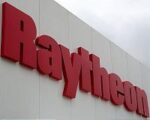At DSEI 2025 in London, a new player entered the increasingly vital domain of unmanned undersea warfare. The Stingray Autonomous Underwater Vehicle (AUV), developed by UK-based SubSeaTech Robotics in collaboration with the Royal Navy’s Defence Science and Technology Laboratory (Dstl), is designed to provide persistent seabed protection and underwater intelligence-gathering capabilities. With a modular payload architecture and up to 48 hours of submerged endurance, Stingray is tailored for complex littoral and deep-sea missions ranging from mine countermeasures (MCM) to subsea infrastructure surveillance.
Modular Design for Multi-Mission Flexibility
The Stingray AUV features a modular design that enables rapid reconfiguration based on mission requirements. Its central payload bay supports plug-and-play integration of various sensor suites including synthetic aperture sonar (SAS), side-scan sonar (SSS), magnetometers, hydrophones, environmental sensors, and optical imaging systems. This flexibility allows operators to tailor the platform for tasks such as:
- Seabed mapping and object classification
- Pipeline inspection and infrastructure monitoring
- Mine detection and neutralization support
- Acoustic intelligence (ACINT) gathering
The modularity extends beyond sensors. According to SubSeaTech representatives at DSEI, future versions may support swappable energy modules—enabling either longer endurance or higher-speed transits depending on operational needs.
Endurance and Propulsion Capabilities
The Stingray is powered by a lithium-ion battery system optimized for low acoustic signature operations. The vehicle can operate continuously for up to 48 hours at depths exceeding 300 meters. Its hybrid propulsion system combines low-speed electric thrusters for silent cruising with optional high-thrust boosters that can be activated during evasive maneuvers or rapid repositioning.
With a cruising speed of approximately 3 knots and sprint capability up to 8 knots in short bursts, Stingray balances persistence with tactical agility. Navigation is supported by an inertial navigation system (INS) integrated with Doppler velocity logs (DVLs) and GPS surfacing routines when required.
Seabed Warfare Applications Rise in Strategic Priority
The development of platforms like Stingray reflects growing concern among NATO navies over the vulnerability of subsea infrastructure—including fiber-optic cables, offshore energy platforms, undersea pipelines—to sabotage or espionage. The Nord Stream pipeline incidents underscored how seabed assets have become strategic targets in hybrid conflict scenarios.
The Royal Navy has prioritized seabed warfare capabilities since publishing its Integrated Review Refresh in early 2023. In that document—and subsequent statements from UK Strategic Command—undersea domain awareness was identified as a critical capability gap. The introduction of autonomous systems like Stingray aims to fill this gap without requiring constant manned presence or costly surface ship deployments.
C4ISR Integration and Autonomy Features
Stingray’s onboard processing suite supports semi-autonomous mission execution using pre-programmed waypoints combined with real-time sensor fusion algorithms. It can autonomously detect anomalies on the seafloor—such as foreign objects near critical infrastructure—and flag them via encrypted acoustic modems or RF bursts upon surfacing.
The AUV is compatible with NATO-standard C4ISR architectures via Link-11/Link-22 gateways when surfaced or tethered via buoyant antennae. This ensures seamless integration into joint maritime task forces conducting MCM or ISR operations.
An onboard AI module enables adaptive mission behavior—for example rerouting around detected threats or dynamically adjusting search patterns based on terrain complexity or sensor feedback.
Export Potential and Industrial Partnerships
SubSeaTech Robotics has indicated that it intends to market Stingray internationally under ITAR-free status—a key advantage for non-U.S.-aligned navies seeking advanced undersea capabilities without export restrictions. Initial interest has reportedly come from Scandinavian countries concerned about Arctic undersea surveillance gaps.
The company also announced partnerships with Thales UK for sonar integration support and Babcock International for servicing packages tied to Royal Navy deployment cycles. Production will take place at SubSeaTech’s expanded facility near Portsmouth Naval Base starting Q1 2026.
Conclusion: A Timely Entrant into an Expanding Domain
The unveiling of the Stingray AUV at DSEI underscores how rapidly evolving threats beneath the waves are reshaping naval procurement priorities. With its long endurance, modular payloads, stealthy profile, and C4ISR connectivity options, Stingray positions itself as a versatile tool not just for traditional mine countermeasures but also broader seabed warfare missions in contested environments.
If successfully adopted by the Royal Navy—and potentially NATO partners—it could mark a step-change in how Western navies monitor and defend their critical subsea terrain in an era where gray-zone conflict increasingly extends below the surface.









